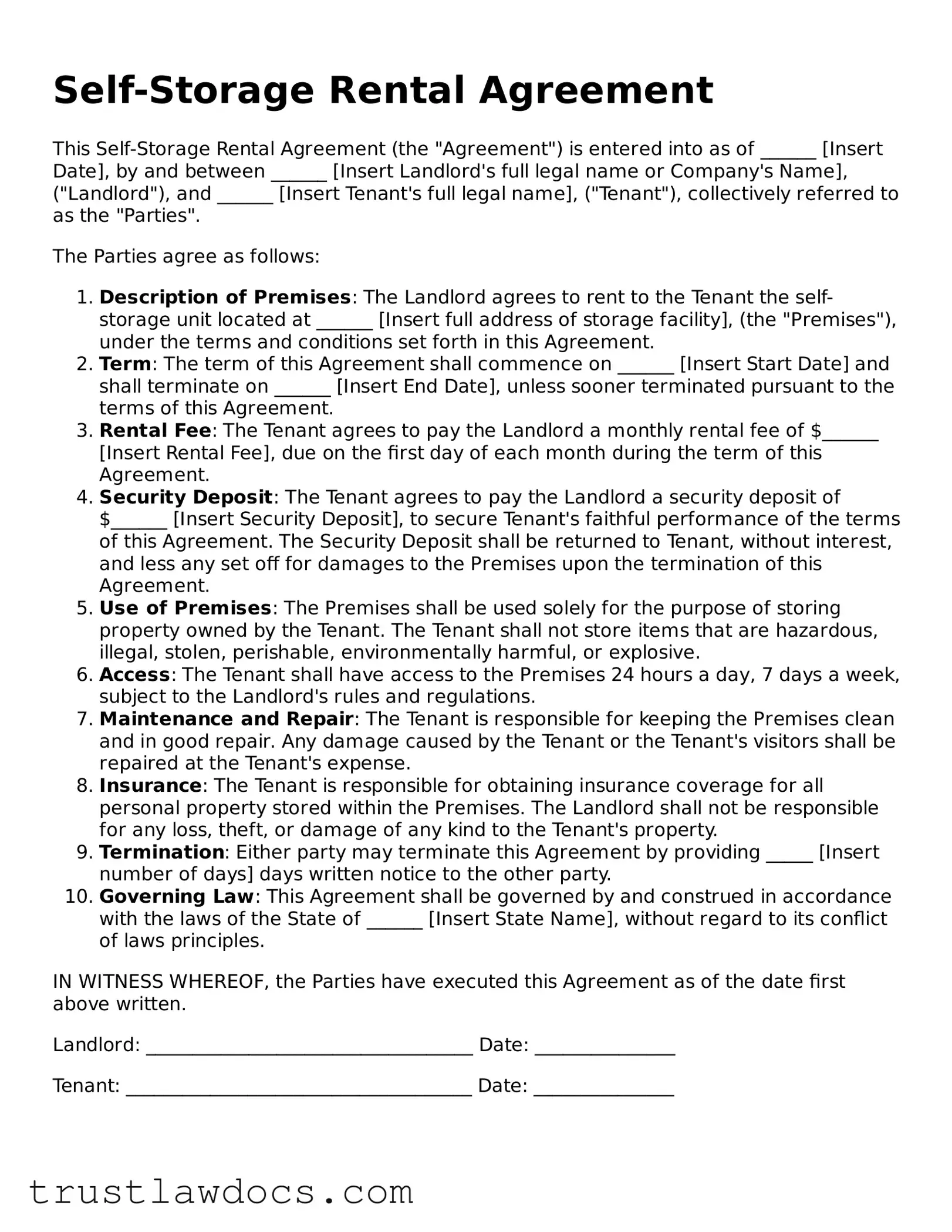What is a Self-Storage Rental Agreement?
A Self-Storage Rental Agreement is a legal contract between the storage facility owner and the person renting the storage unit. It outlines terms such as rental amount, payment due dates, use of the unit, and conditions on termination of the agreement. It’s designed to protect both parties by clarifying expectations and responsibilities.
Why do I need a Self-Storage Rental Agreement?
Having a Self-Storage Rental Agreement is crucial because it ensures that both the facility owner and the renter are on the same page regarding the rental terms. It prevents misunderstandings and provides a legal framework to address any disputes that may arise, protecting both parties' interests.
What should be included in a Self-Storage Rental Agreement?
A comprehensive Self-Storage Rental Agreement should include the names of all parties involved, a description of the storage unit, rental payment details (amount and due dates), terms regarding the use of the unit, security deposit information, rules about termination of the agreement, and any restrictions or permissions (like access hours or allowed items).
How long does a Self-Storage Rental Agreement last?
The duration of a Self-Storage Rental Agreement can vary widely depending on the terms agreed upon by the parties. It could be set for a fixed term, such as six months or one year, or it might operate on a month-to-month basis, which is quite common in the self-storage industry.
Can I terminate my Self-Storage Rental Agreement early?
Early termination of a Self-Storage Rental Agreement is generally allowed, but it may be subject to conditions outlined in the agreement, such as notice periods and/or early termination fees. Always read your agreement carefully to understand the requirements for early termination.
What happens if I miss a payment?
If a payment is missed, the specific consequences will depend on the terms outlined in your Self-Storage Rental Agreement. Typically, there could be late fees, and if the missed payments continue, it might result in the contents of the storage unit being auctioned or disposed of after a certain period. Prompt communication with the storage facility is key in such situations.
Are my belongings insured by the storage facility?
Most of the time, the storage facility does not insure personal belongings stored in the unit. It is usually the renter's responsibility to secure insurance for their stored items. Some facilities may offer insurance for an additional fee, or your existing homeowner’s or renter’s insurance may cover stored items. Always verify insurance coverage before signing the agreement.
What if I need to access my belongings outside of normal access hours?
Access hours are typically specified in the Self-Storage Rental Agreement. If you need access outside of these hours, you should contact the storage facility management. Accommodations can sometimes be made, but it may involve additional charges or require special arrangements.
